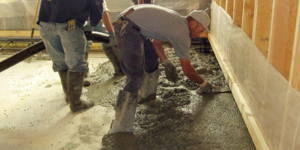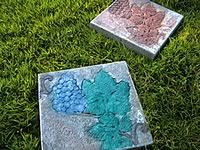 |
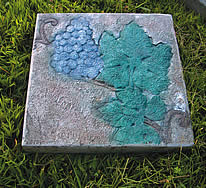 |
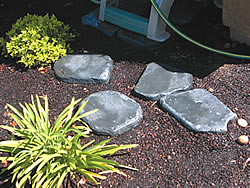 |
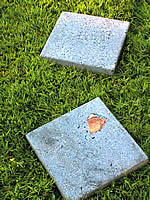 |
Last week, I passed by my local supply house and witnessed an unfamiliar sight. Encasing the building was an infinite line of people eager to get in the store. At first I thought, “Did ‘N SYNC get back together and start selling concert tickets at hardware stores?” I approached one of the men in line and asked what the fuss was all about.
“We’re waiting in line for cement,” said David Cunningham of David Jack Corp. “They ran out last week and a new shipment arrived today.” When asked how long he had been waiting in line, he gave me a frustrated look and said, “Since 4:30 a.m.”
Unfortunately, Mr. Cunningham is not alone. The concrete industry, as a whole, may soon be affected by a cement shortage. In order to understand the cement shortage, we must first take a look at the factors that are responsible for the lack of this precious material. They include growth in construction activity, limited supply, and increased shipping rates.
Supply vs. demand
This past year was a hallmark for the construction industry. The Commerce Department reported that nearly $100 billion dollars was spent on construction costs this year alone, and that this spending trend is likely to continue. Even cold winter days didn’t slow the building industry. Normally, when construction is slowed in the holiday season, cement plants will stock up on cement to prepare for the spring explosion. With no letup in demand for cement products, many plants did not have the resources to facilitate the booming spring and summer seasons, when construction is at its highest. However, this is only a part of the problem.
The United States produces the majority of the concrete products we use. However, 22.6 percent of our cement is imported. The importation of cement from countries like China helps fill the voids in domestic production and demand. This year, freight costs and limited availability of shipping have put a stranglehold on the importation of cement. China’s economy is at an all-time high and their ability to export many of the goods they produce is limited. The result is diminished cement supply and expensive shipping rates. Prices have not only increased for cement products, but they have become unavailable in many parts of the country. With conditions being what they are, we as artisans need to do all we can to conserve this natural resource.
What can we do?
There is an old saying that states, “A little goes a long way.” First, only mix what you need. It seems simple, but how many times have you completed a project only to find an obscene amount of leftover concrete sitting in a bucket? As you near completion of a stamp or overlay project, mixing only half or a quarter of a bag will not only conserve materials, it will also save you money. Next, find creative ways to use your leftover materials. At Solid Solutions, we have reusable molds that we use to make concrete countertop samples. At the end of every pour, we fill these molds with the leftover material and then give them to clients as samples.
On flooring jobs, always carry some scrap plywood or cement board to every job site. After you complete a job, trowel the leftover flooring material onto the wood and then use them as samples. We like to take these uncolored samples to our clients’ homes, where they can spray stain on them and pick the color for their project. The clients love being able to mix their own colors and we’re using material that we would have had to throw away.
Finally, make some stepping-stones. You can find reusable molds for stepping-stones at any craft store. Fill the molds with your scrap material, and allow them to cure. Once released from the mold, stain and seal the stepping-stones and give them to your clients as a “Thank-you-for-your-business gift.” This small gesture has gotten us many client referrals. They are easy to make and the homeowners love them.
For more information on the shortage, visit the Portland Cement Association Web site.

